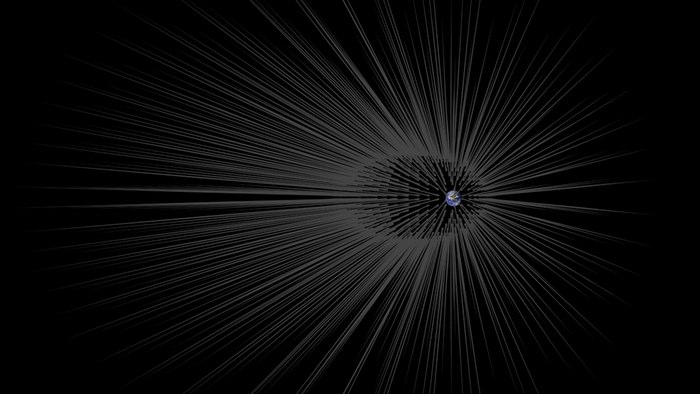A new theory from NASA's Jet Propulsion Laboratory (JPL) in
Pasadena, California, suggests that dark matter may interact with
planets, forming long filaments or "hairs" of invisible particles.
Studying these hairs could be scientifically fruitful, deepening our
knowledge of the elusive matter, and even using them to analyze
distant planetary bodies.
Dark matter is extremely prevalent, with current theories estimating that it makes up around 27 percent of all matter and energy in the entire Universe. It's a very common and extremely important area of study, with past research examining everything from its very nature to how it might play a role in mass extinction events.
The other big characteristic of dark matter is that it's
extremely difficult to detect. While the effects of its
gravitational pull make us certain that it exists, we've never
actually successfully observed it.
So, why is it so hard to detect? Well, current theories suggest that it doesn't move around as much as normal matter, and that it's "dark" in that it doesn't interact with or produce any light at all.
Despite its illusive nature, dark matter is thought to have a huge impact on the Universe. The visible matter that makes up stars, planets and entire galaxies forms as a reaction to fluctuations in the density of dark matter, while gravity holds the visible and invisible matter together.
Decades-old calculations suggested that dark matter forms streams of particles all moving at the same velocity. These streams can be huge – as large as entire solar systems – and are laced out amongst the visible matter of galaxies.
The JPL researchers used computer simulations to demonstrate what might happen when one of these streams interacts with a planet. While a physical object such as a planet would stop ordinary matter in its tracks, dark matter particles pass straight through it, affected only by the gravity of the object, which according to the simulations, focuses the stream into a narrow and extremely dense filament.
These hair-like structures, many of which may be present around our own planet, have "roots" where the dark matter is most concentrated, some billion times more than average. On more massive planets the elevated density is even more pronounced. For example, the roots of the filaments around Jupiter are almost 1 trillion times denser than the original stream of particles.
These roots are located pretty far out from the objects they surround – some 600,000 miles (1 million km) in the case of Earth. If we were able to pinpoint their location then it might even be possible to to send a probe out to attempt to gather data on the invisible particles.
The computer simulations revealed one other fascinating insight into the potential behavior of dark matter, and it's one that could help us analyze distant planets. According to the simulation, when the particles pass through a planet, the changes in density directly affect the structure of the filaments, creating kinks at the transition points between different layers of the Earth.
As our understanding of dark matter improves, it might one day be possible to detect those kinks, allowing astronomers to look at distant planetary bodies and map out their layers from afar, gaining insights into their structures and even the depths of their oceans.
Source: NASA

